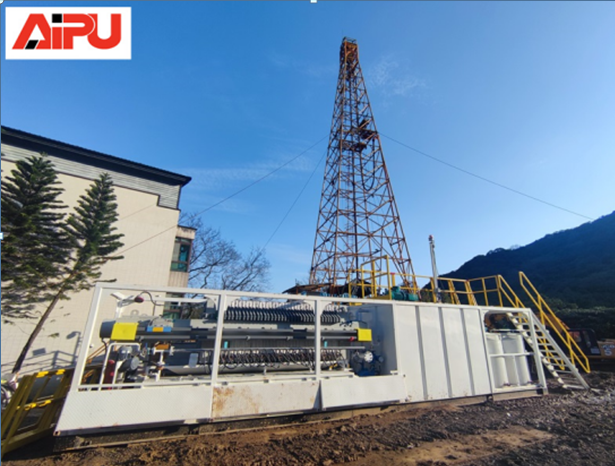How Equipment Transforms the Drilling Process
In the dynamic landscape of industrial operations, the role of solids control equipment cannot be overstated. These systems are designed to separate solids from liquids, ensuring that processes run smoothly and efficiently. By unleashing the power of solids control equipment, you can significantly enhance the productivity and profitability of your operations.
Understanding Solids Control Equipment
Solids control equipment encompasses a range of devices, including shale shakers, desanders, desilters, and centrifuges. Each piece of equipment plays a crucial role in the solids control process. Shale shakers are the first line of defense, removing large solids from the drilling fluid. Desanders and desilters further refine the fluid by removing smaller particles. Centrifuges, on the other hand, are used to separate fine solids from the liquid phase, ensuring a high - quality end product.
The efficiency of these devices is determined by factors such as screen size, flow rate, and rotational speed. By carefully selecting and configuring the right equipment for your specific needs, you can optimize the solids control process and achieve better results.
Benefits of Implementing Solids Control Equipment
One of the primary benefits of using solids control equipment is improved equipment longevity. By removing abrasive solids from the fluid, you can reduce wear and tear on pumps, valves, and other components. This leads to fewer breakdowns and lower maintenance costs over time.
Another significant advantage is enhanced environmental compliance. Proper solids control helps in reducing the amount of waste generated during operations. This not only minimizes the environmental impact but also ensures that your operations meet regulatory requirements. Additionally, it can improve the quality of the drilling fluid, which in turn can enhance the performance of the drilling process.
Selecting the Right Solids Control Equipment
When choosing solids control equipment, several factors need to be considered. First, assess the nature of your operations. Different industries and applications have unique requirements. For example, the solids control needs of an oil and gas drilling operation may differ significantly from those of a mining or construction project.
Second, evaluate the capacity and efficiency of the equipment. Ensure that the equipment can handle the volume of fluid and solids generated in your operations. Also, look for equipment with advanced features such as automated controls and easy - to - maintain designs.
Maintenance and Optimization of Solids Control Equipment
Regular maintenance is essential for the proper functioning of solids control equipment. This includes routine inspections, cleaning, and replacement of worn - out parts. By following a strict maintenance schedule, you can prevent breakdowns and ensure the long - term reliability of the equipment.
Optimization of the solids control process is also crucial. This can be achieved by monitoring key performance indicators such as solids removal efficiency, fluid quality, and equipment throughput. By analyzing this data, you can make informed decisions to improve the overall performance of the solids control system.
In conclusion, solids control equipment is a powerful tool that can transform your operations. By understanding its capabilities, selecting the right equipment, and maintaining it properly, you can unleash its full potential and drive your business towards greater success.

Understanding Solids Control Equipment
Solids control equipment encompasses a range of devices, including shale shakers, desanders, desilters, and centrifuges. Each piece of equipment plays a crucial role in the solids control process. Shale shakers are the first line of defense, removing large solids from the drilling fluid. Desanders and desilters further refine the fluid by removing smaller particles. Centrifuges, on the other hand, are used to separate fine solids from the liquid phase, ensuring a high - quality end product.
The efficiency of these devices is determined by factors such as screen size, flow rate, and rotational speed. By carefully selecting and configuring the right equipment for your specific needs, you can optimize the solids control process and achieve better results.
Benefits of Implementing Solids Control Equipment
One of the primary benefits of using solids control equipment is improved equipment longevity. By removing abrasive solids from the fluid, you can reduce wear and tear on pumps, valves, and other components. This leads to fewer breakdowns and lower maintenance costs over time.
Another significant advantage is enhanced environmental compliance. Proper solids control helps in reducing the amount of waste generated during operations. This not only minimizes the environmental impact but also ensures that your operations meet regulatory requirements. Additionally, it can improve the quality of the drilling fluid, which in turn can enhance the performance of the drilling process.
Selecting the Right Solids Control Equipment
When choosing solids control equipment, several factors need to be considered. First, assess the nature of your operations. Different industries and applications have unique requirements. For example, the solids control needs of an oil and gas drilling operation may differ significantly from those of a mining or construction project.
Second, evaluate the capacity and efficiency of the equipment. Ensure that the equipment can handle the volume of fluid and solids generated in your operations. Also, look for equipment with advanced features such as automated controls and easy - to - maintain designs.
Maintenance and Optimization of Solids Control Equipment
Regular maintenance is essential for the proper functioning of solids control equipment. This includes routine inspections, cleaning, and replacement of worn - out parts. By following a strict maintenance schedule, you can prevent breakdowns and ensure the long - term reliability of the equipment.
Optimization of the solids control process is also crucial. This can be achieved by monitoring key performance indicators such as solids removal efficiency, fluid quality, and equipment throughput. By analyzing this data, you can make informed decisions to improve the overall performance of the solids control system.
In conclusion, solids control equipment is a powerful tool that can transform your operations. By understanding its capabilities, selecting the right equipment, and maintaining it properly, you can unleash its full potential and drive your business towards greater success.








